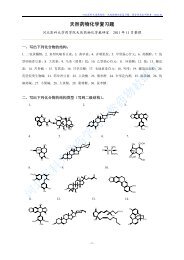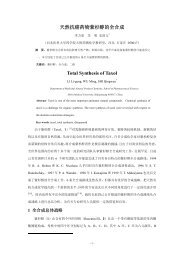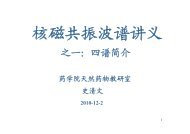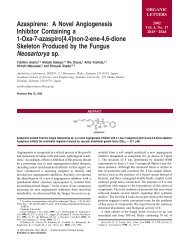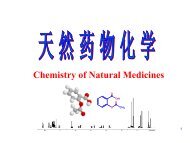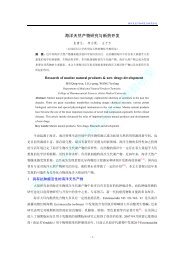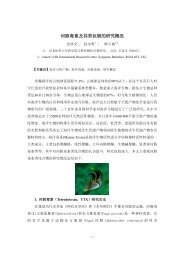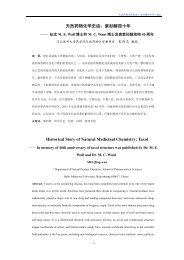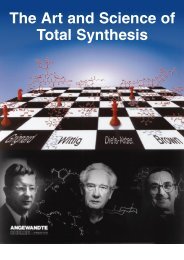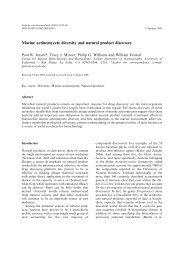Total Synthesis Highlights
Total Synthesis Highlights
Total Synthesis Highlights
You also want an ePaper? Increase the reach of your titles
YUMPU automatically turns print PDFs into web optimized ePapers that Google loves.
A variety of dolabellanes, some of which show substantial physiological activity, have been<br />
isolated from natural sources. E. J. Corey of Harvard University has introduced (J. Am. Chem. Soc.<br />
2005, 127, 13813. ) a unfied approach to the dolabellanes, represented by isoedunol (3), based on<br />
the designed rearrangement of the mesylate 1 to 2.<br />
The key to this approach was the stereocontrolled construction of the cyclobutane 1. The starting<br />
material was the racemic iodo acetonide 4 derived from farnesol. Alkylation of 5 using the<br />
Seebach protocol followed by hydrolysis led the methylthiomethyl ether 7. The ester was<br />
converted to the hydroxy cyclopropane 8 by the Kulinkovic procedure. On activation with Me 3 Al,<br />
8 was smoothly carried on to the enantiomerically-pure cyclobutanone 9. The ring expansion must<br />
not be proceeding by full ionization, as carbocation formation would have led to the racemic<br />
product. The aldehyde derived from 9 was cyclized with SmI 2 to the trans diol 10.<br />
In medium ring derivatives such as 10, one substituent on a ring carbon will be inside, and the<br />
other will be outside. The conformation of 10 is such that formation of the mesylate from the<br />
secondary alcohol led to migration of the more substituted cyclobutane bond, delivering 11. It<br />
follows that the conformation of the diol 12 will be flipped, to keep the OH outside the ring.<br />
Formation of the mesylate from the secondary alcohol of 12 led cleanly to migration of the less<br />
substituted cyclobutane bond, to give the desired cyclopentanone 2.



